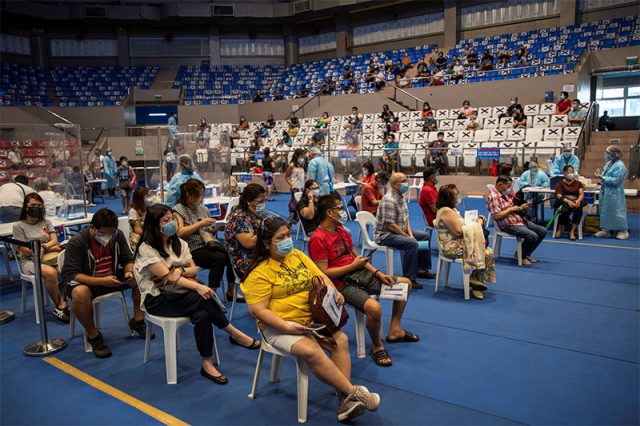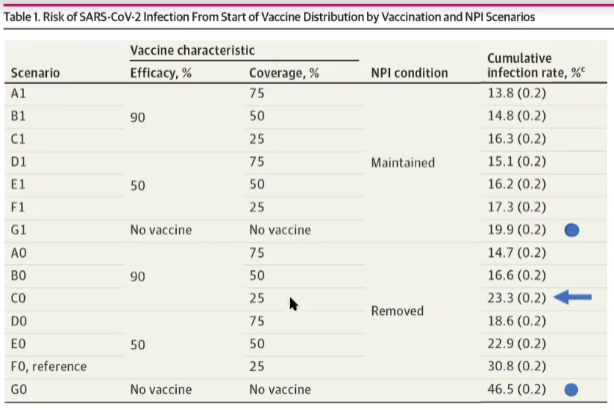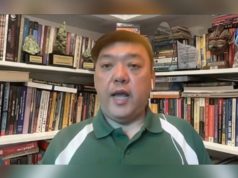
Face shields and face masks do not deliver equal protection as a COVID-19 jab but are still needed in the meantime, according to a fellow of the OCTA Research Group.
This statement came after Malacañang claimed that the mandated minimum public health standards, which include the wearing of face shields, protect the public from the 2019 coronavirus as much as the vaccine.
Presidential spokesperson Harry Roque made this claim in a briefing on June 3 after he was asked about Manila Mayor Francisco “Isko” Moreno Domagoso’s call to scrap the face shield policy.
“Statistically kapag ikaw po ay nag-facemask, face shield at nag-distancing halos equivalent po proteksiyon niyan sa bakuna ‘no,” Roque said.
“So sa akin po sa siyensiya may basehan po iyan, sa gastos bagamat nagastusan po ang ating mga kababayan, eh halos lahat naman po mayroon nang face shield so wala na pong extra gastos po iyan,” he added.
The national government ordered the wearing of face shields at all times when outdoors last December.
Not really equal
In the webinar on June 4, Dr. Michael Tee of the UP College of Medicine, a fellow of the OCTA Research Group, stressed the need for the public to continue observing health protocols as the country struggles with its vaccination program.
Tee cited a study titled “Association of Simulated COVID-19 Vaccination and Nonpharmaceutical Interventions with Infections, Hospitalizations, and Mortality” that showed how health protocols can lower infection rates in addition to receiving COVID-19 jabs.
“Kung may [minimum public health standards], ang pagbabakuna ng 25% ng populasyon kahit 50% effective na bukuna ay katumbas na ng pagbabakuna ng 50% gamit ang 90% effective na bakuna,” he said.

Researchers of the study itself also concluded that nonpharmaceutical interventions such as public health protocols should remain in place during the vaccine rollout.
“Simulation outcomes suggest that removing NPIs while vaccines are distributed may result in substantial increases in infections, hospitalizations, and deaths,” they said.
“Furthermore, as NPIs are removed, higher vaccination coverage with less efficacious vaccines can contribute to a larger reduction in risk of SARS-CoV-2 infection compared with more efficacious vaccines at lower coverage,” they added.
While Tee supported Roque’s claim, he argued that it’s better to comply because most Filipinos have yet received their vaccines.
He also cited a scenario wherein wearing a face shield can protect the person from getting infected from someone who does not wear face masks properly.
“Yun yung protection (shield) para di ka mahawa. Yung mask naman, maganda rin, para di ka makahawa,” Tee said.
Sending a confusing message
Some concerned Filipinos and doctors, meanwhile, slammed Roque anew over his claim, saying that it sends a misleading message to the public.
“So paano naging 1.23 million na ang cases ng Philippines kung kasimbisa ang bakuna at ang faceshield + face mask + distancing? Paki paliwanag statistically ha!” one user said.
“This is sending the wrong message to the people,” another user wrote.
Other users emphasized that there is no substitute for vaccination.
“Facial masks, shields, physical distancing when used in combination will reduce viral transmission. There’s no substitute for vaccination. Vaccination leads to herd immunity; herd immunity leads to economic recovery in the future!” one user said.
“Nothing replaces vaccination and herd immunity. Don’t mislead. This does not help with our vaccination campaign,” another said.









